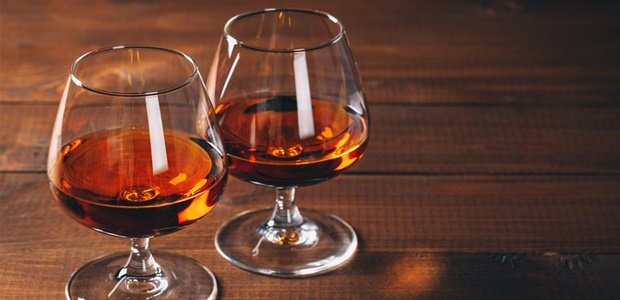(Image: iStock)
If you didn’t know this already, cognac is a type of brandy. So what’s with the name? Well, cognac has to be made in a very particular way, as outlined by the Bureau National Interprofessionnel du Cognac.
South African brandy also follows strict criteria, in this case determined by the Liquor Products Act. The growth and integrity of SA brandy is facilitated and preserved by the South African Brandy Foundation, a local NPO.
Let’s explore the subtleties that set these two world-leading brandies apart.
1. Region
The most significant, or most obvious, difference between the two is in where they’re made. Like port that has to be made in Porto, champagne that has to be made in Champagne, and scotch that has to be made in Scotland, cognac has to be made in the Cognac region of southwestern France.
Brandy, on the other hand, can be made anywhere. While many countries have variations on the spirit, such as Spain’s brandy de Jerez and Peru’s pisco, we’re going to zoom in on South African brandy.
2. Ingredients
In the larger context, brandy can be made from any kind of fruit. Cognac and South African brandy, however, must be made from grapes. While several varieties are acceptable for both regions, cognac is generally made from Ugni Blanc, while SA brandies favour Chenin Blanc and Colombar.
3. Production
Essentially, brandy is made by fermenting fruit into a type of wine, and then distilling that into a spirit. The regulations for cognac and SA brandy get very technical here, covering specifics like sugar levels and volatile acidity, but the biggest factor is the kind of still used.
Cognac must be double distilled in a copper potstill. SA brandy allows for both pot and column-still distillation, but the final blend must contain at least 30% potstill brandy.
4. Maturation
Right, so not all brandies are aged in barrels, but, you guessed it, cognac and SA brandies are, which is precisely why they’re both smooth and amber in colour.
For cognac, maturation takes place for a minimum of two years in 270–450l French oak casks. SA brandy must be aged for at least three years in barrels no larger than 340l. French oak is typically preferred.
5. Blending and classification
Blending is the process of mixing brandies together to create different flavour profiles, while bringing the alcohol content down with distilled or demineralised water. Cognac’s minimum alcohol content must be 40%, while SA brandy is either 38% or 43%.
In SA, the potential blends are:
• Potstill Brandy: 100% potstill brandy that’s been aged for at least three years, KWV 10 YO.
• Blended Brandy: at least 30% potstill brandy that’s been aged for at least three years plus unmatured column-still brandy, like Klipdrift Export
• Vintage Brandy: at least 30% potstill brandy plus column-still brandy, both of which have been aged for at least eight years, like Van Ryn’s 10 YO.
• Estate Brandy: where the brandy (whatever type) is made at a single estate, from start to finish, like Blaauwklippen.
As mentioned, cognacs are always 100% potstill brandy, the various blends being:
• Very Special or three star: aged for at least two years, like Hennessy VS
• Very Superior Old Pale, Reserve: aged for at least four years, like Bisquit VSOP
• Napoléon, Extra Old, Hors d’âge: aged for at least six years, like Godet XO
6. Quality
And here’s the clincher. What’s better? Well, cognac has been around longer, and it was certainly superior at first, outperforming SA brandy in blind tastings. However, by 1981 SA brandy had caught up, beating cognac in the esteemed International Wine & Spirit Competition.
It’s no coincidence that around the same time the French insisted that the two spirits be classed as separate categories going forward. Now of course, there’s no way to say for sure, apart from doing side-by-side tastings yourself.
For more cocktail and spirits news catch Leah on Twitter or Instagram.
ALSO READ…
Whisky for beginners
Does your lack of whisky knowledge stop you from ordering it in a bar? Learn the basics with this whisky 101, and dive in. What exactly is whisky? Yes, we’re really starting with the basics here! Whisky (or whiskey) is a honey-coloured distilled spirit that’s made from grains and typically contains 43-50% alcohol.

